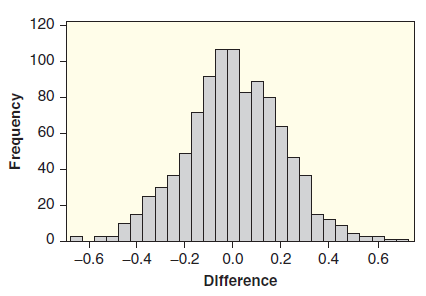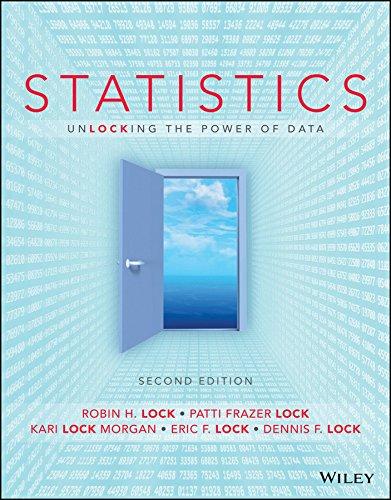Exercise 4.38 on page 235 describes a study to investigate whether a recorded phone call is more
Question:
Figure 4.18
 (a) Sketch a smooth curve that roughly approximates the distribution in Figure 4.18 and shade in the proportion of the area corresponding to the p-value for the sample statistic D = 0.3.
(a) Sketch a smooth curve that roughly approximates the distribution in Figure 4.18 and shade in the proportion of the area corresponding to the p-value for the sample statistic D = 0.3.
(b) Four possible sample statistics are given, along with four possible p-values. Match the statistics with the p-values:
Statistics : 0.1, 0.3, 0.5, 0.7
P-values : 0.012, 0.001, 0.365, 0.085
(c) Interpret the p-value 0.001 in terms of the probability of the results happening by random chance.
(d) Of the four p-values given in part (b), which provides the strongest evidence that a phone call is more effective?
The word "distribution" has several meanings in the financial world, most of them pertaining to the payment of assets from a fund, account, or individual security to an investor or beneficiary. Retirement account distributions are among the most...
Fantastic news! We've Found the answer you've been seeking!
Step by Step Answer:
Related Book For 

Statistics, Enhanced Unlocking The Power Of Data
ISBN: 9781119308843
2nd Edition
Authors: Robin H Lock, Patti Frazer Lock, Kari Lock Morgan, Eric F Lock, Dennis F Lock
Question Posted:





